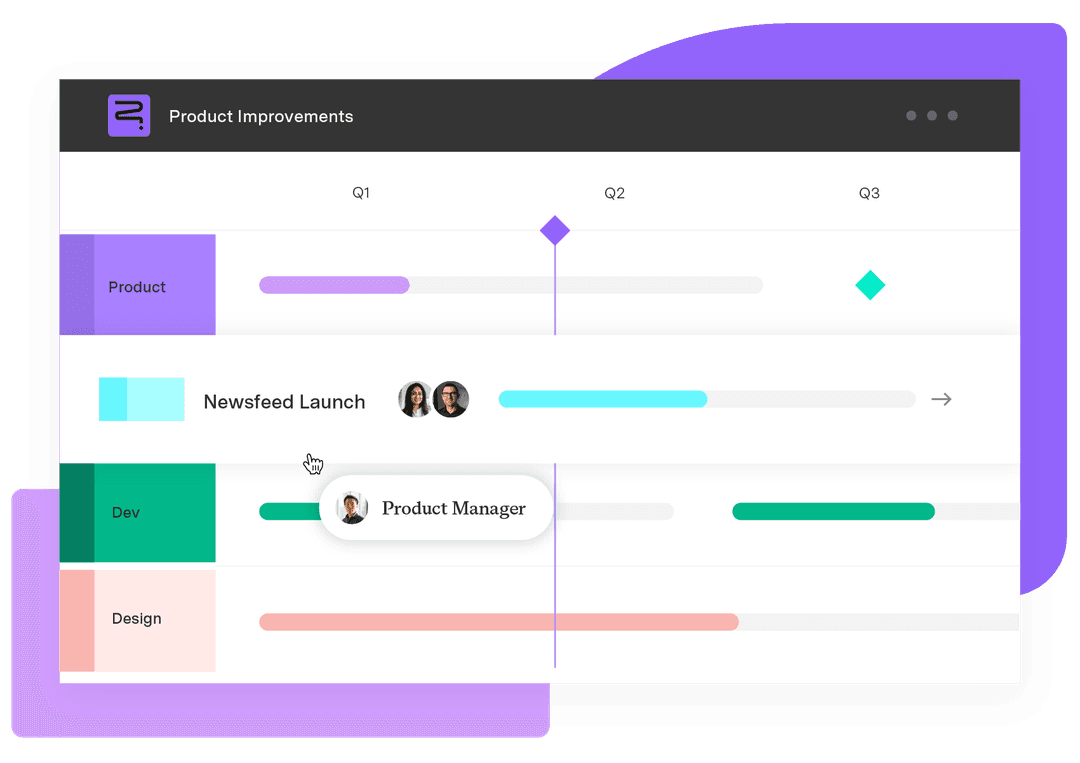Crisis management plan: Prepare and respond effectively
Tempo Team
When a crisis happens at work, most people want to help – it’s human nature. But so is hesitating when there’s no clear plan. Whatever the situation – a cyberattack, a product recall, a leadership shake-up – uncertainty makes it harder to act!
A crisis management plan (CMP) gives your team the direction and confidence to act when every second counts rather than succumb to doubt and confusion.
Here, we'll explain how to create a CMP that keeps your organization calm, collected, and ready to respond when it matters most.
What’s a crisis management plan (CMP)?
For most companies, any event that negatively affects operations, profitability, or brand reputation qualifies as a crisis. To minimize reputational harm and protect their people, organizations create crisis management plans (CMPs) for all kinds of potential disasters. Each plan outlines a tailored response based on the type of incident.

In an emergency, a CMP outlines roles, responsibilities, and timing. It covers staffing, resources, and communication, with clear procedures to stabilize the situation quickly and effectively.
CMPs typically include the following:
Risk assessment: CMPs identify potential threats, such as natural disasters, cyberattacks, or product recalls, and evaluate how likely each is to occur. They also include strategies to mitigate the impact.
Action plan: Which team members are responsible for responding to the disruption? CMPs define each person’s roles and the specific actions they’re expected to take.
Trigger: What sets the plan in motion? CMPs clarify what qualifies as a crisis and outline how to respond appropriately.
Communication strategy: What needs to be shared – and with whom? CMPs detail internal and external messaging, including who communicates updates, how they deliver them (through email, SMS, or press releases), and who manages incoming questions or concerns from staff, stakeholders, and the public.
Emergency contacts: CMPs list key contacts for crisis scenarios, including names, roles, and preferred methods of contact.
Post-mortem process: CMPs also include steps for what to do once the dust has settled – what worked, and what didn’t? They include debrief meetings or after-action reports to assess the response and identify areas for improvement.
Steps to create a crisis management plan
Creating a CMP might seem overwhelming – there’s a lot to consider. But don’t let that stop you. Here’s a framework to help you get started:
1. Designate a crisis response team
Appoint representatives from across teams like operations, HR, legal, communications, and IT. Their different perspectives can help identify risks you might otherwise miss. Involving a crisis response team early in the scenario planning process ensures they understand the CMP and feel confident in their role.
2. Perform a risk assessment
With your team in place, it’s time to size up the risks you need to be ready for. Gather input from across the organization to identify potential threats, and then use a risk register to evaluate how likely each one is to occur. Focus your planning on the most probable scenarios first, and revisit the register regularly to update it with new or evolving risks.
3. Analyze potential impact
Once you’ve identified the biggest threats to your organization, think about the kind of damage they might cause. Every crisis has different consequences, so each needs its own analysis. Start with the highest-priority threat and consider potential impacts such as:
Loss of customers
Damage to brand reputation
Delays in product delivery
Drops in revenue
Legal consequences like fines, investigations, or arrests
4. Outline the CMP
With potential risks and impacts clearly defined, you’re ready to begin shaping your formal plan. Decide how you’ll monitor threats, when to activate your CMP, and how each team will respond to mitigate the damage. Document a step-by-step response organized by department, and assign ownership for each action.
5. Establish a crisis communication strategy
A strong crisis response also depends on knowing what to say – and when. Set up clear workflows for how information moves during an emergency, both internally to employees and externally to the public. Assign dedicated communication channels for each audience, and designate specific people to manage them. One spokesperson might handle press inquiries, while another addresses stakeholder questions.
Use a crisis communication plan template to draft messages in advance – so if the time comes, you can quickly adapt them with key details.
6. Finalize the CMP
Once the crisis management team has outlined the CMP’s steps and established how to communicate during an emergency, it’s time to gather feedback. Input from stakeholders helps refine the response plan and can reveal blind spots the team may have overlooked.
7. Conduct training sessions and drills
Now that the CMP is officially finished, share it with the rest of the team. Leadership should walk employees through what to expect and who’s in charge during a crisis. Drills allow everyone to rehearse the plan before a real emergency hits, which is critical for building confidence.
8. Review and revise
Crisis planning isn’t one-and-done. Review your CMP regularly – after a drill, a real-world incident, or on a set schedule. Use each review to identify new risks, reflect on lessons learned, and refine your response. After every update, share the revised plan with your staff so that everyone’s aligned.
Why crisis management plans matter
In emergency situations, a crisis management plan prepares employees to stay calm and act rationally. It provides structure in high-pressure scenarios that guides teams to make sound decisions even when things go sideways.
Here’s how:
Avoid panic: Clear, step-by-step instructions reduce confusion and anxiety. When people know what to do in an emergency and when to do it, there’s less room for confusion or panic.
Make better decisions: A well-crafted plan keeps the team grounded, even if things don’t go exactly as expected. And when that happens, everyone’s better equipped to adapt and respond wisely.
Clarify action: CMPs eliminate guesswork. With roles and responsibilities mapped out ahead of time, nobody’s left guessing – everyone knows what’s expected of themselves and others.
Work together effectively: Training ensures everyone understands their role in the CMP, so all responsibilities are covered, but efforts aren’t duplicated.
Recover faster: Beyond the initial response, a good CMP allows you to contain the crisis quickly and shortens the road to recovery.
Protect company reputation: A ready-to-go comms plan lets you share accurate information fast, before rumors and speculation spread. Clear, organized communication builds trust with customers, stakeholders and the public.
Simplify insurance claims: Sharing your CMP with your insurance provider can help speed up the claims process and even expedite damage payouts.
Crisis management plan examples
You can’t predict every crisis, but many follow familiar patterns that you can prepare for. Here are four scenarios where CMPs can be a lifesaver:
1. Natural disasters
Floods, fires, snowstorms and other types of disasters can shut down operations in an instant. A crisis management plan helps teams act before the sky turns. Here's what to include:
Early warning systems: Set up tools to monitor weather alerts and flag risks before they escalate.
Risk assessment and infrastructure safeguards: Identify the most likely threats and outline how to protect buildings, equipment, and systems.
Data protection protocols: Back up files, protect servers, and ensure systems can be recovered quickly in case of an outage.
Crisis communication: Keep employees safe and informed – and keep the outside world in the know, too.
Preparedness training: Run regular drills so everyone knows their roles before disaster hits.
Emergency supply kits: Stock essentials in clearly marked, accessible areas, and make sure staff know where to find them.
2. Cyberattacks
Data breaches do more than expose sensitive information. They stall operations and tarnish customer trust. A well-built crisis plan limits the fallout and helps get you back on track. It should include:
Role-based response teams: Assign responsibilities according to expertise. For example, cybersecurity leads investigate the breach, IT handles containment, legal advises on compliance, and comms manages the message.
Severity-based action plans: Define steps for minor incidents to full-blown system breaches.
Asset inventory: Maintain a current list of physical and digital assets, prioritized by importance.
Escalation protocols: Know when to call in outside support if the breach outpaces internal resources.
Access to recovery tools: Make sure the crisis team can access tools, vendors or legal advisors when needed.
Practice drills: Run mock scenarios to rehearse your response.
Crisis communication strategy: Coordinate messaging with law enforcement, partners, and the public – and do it fast to avoid speculation.
3. Supply chain disruptions
Sometimes, crises happen upstream – a supplier goes dark, a shipping route gets blocked, or a warehouse is compromised. Whatever the cause, customers still expect delivery. Be ready with:
Rapid impact assessment: Quickly evaluate how disruptions affect sourcing and fulfillment.
Vulnerability mapping: Chart every node in your supply chain, from vendors and warehouses to logistics hubs and transport routes, and flag any weak links.
Contingency sourcing: Have backup suppliers on hand for critical components.
Communication strategy: Keep internal teams, partners, and customers in the loop with clear, timely updates.
Reputation recovery plans: Rebuild customer trust through proactive outreach, such as order updates, service credits, or personalized messages that show accountability.
4. Product recalls
Even the best systems aren’t immune to defects. If a faulty product hits the market, especially one tied to health or safety, speed and transparency are indispensable.
Your product recall CMP should cover:
Issue verification: Address what went wrong and how severe the risk is.
Product traceability: Identify affected units using model numbers, batch codes, and production dates to isolate the problem.
Distribution shutdown: Stop the flow of affected items across all sales channels.
Customer communication: Use trusted channels like email and social media to share recall info and next steps.
Ongoing updates: Keep customers informed throughout the recall process, including return instructions and resolutions.
When a crisis hits, Tempo keeps you steady
No matter the emergency, Tempo helps you stay one step ahead. With Tempo’s Strategic Roadmaps, you can visualize your CMP and uncover weak points in your response strategy.
And to put your CMP into action, you need to know who can step up – before a crisis hits. Capacity Planner shows whether your team has the bandwidth, so when it’s time to act, you’re never left scrambling.
Crises may strike without warning, but with Tempo on your side, you’ll be better prepared if and when they do.












































